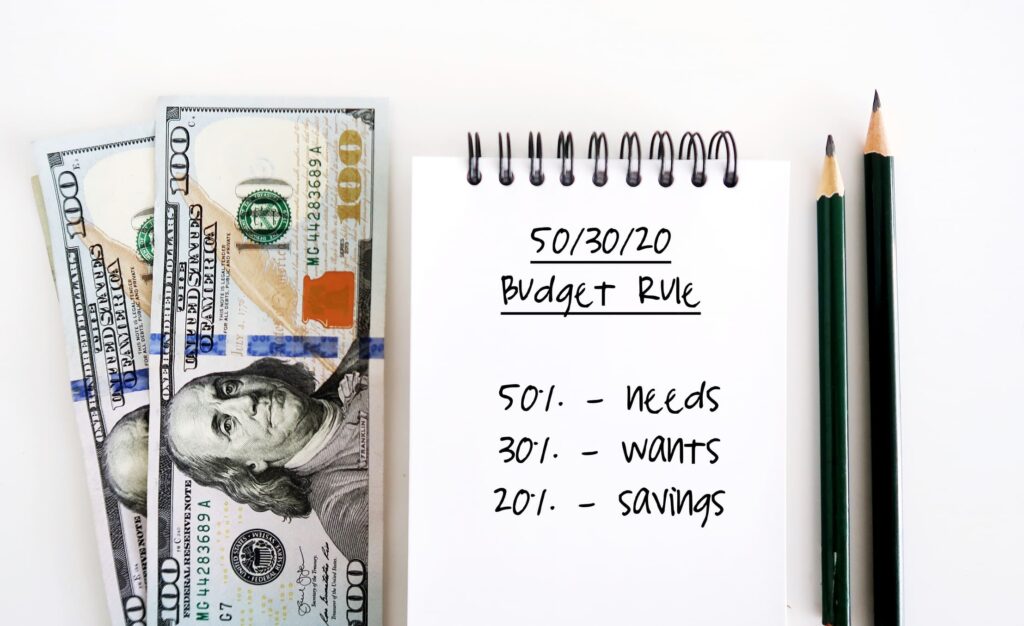When you’re out shopping, or shopping online, and you see that oh-so-perfect [insert thing you must have here] while shopping, it’s hard not to just shout, “But I WANT it!” We’ve all been there. And we know we can’t just buy everything that catches our eye. But managing your money wisely doesn’t mean cutting out all the fun. The 50-30-20 budget rule can help. It’s a simple and effective way to keep your finances in check while still giving yourself a little room for the small indulgences that we all need. Here’s how you can strike the perfect balance between responsible financial adulting and splurging within reason.
1. Understanding the 50-30-20 rule
The 50-30-20 budget rule is super straightforward. It goes like this:
– 50% of your income goes to necessities: Think rent, groceries, utilities, and car or other transportation costs. These are your must-haves to keep your life running smoothly.
– 30% is for wants: This is your fun money! It’s for dining out, shopping, hobbies, subscriptions, and those little things that make you smile.
– 20% goes into savings and debt repayment: This includes contributions to your emergency fund, retirement accounts, and paying down debt from credit cards or student loans.
2. The necessary stuff: 50%
Start by calculating 50% of your net income (what you take home after taxes). This is the part of your budget reserved for essentials. It’s important to be real about what you truly need and what you can realistically live without. Sure, you need to pay rent, but maybe you can find a less expensive place, or even get a roommate to share the cost. Groceries are a must, because you gotta eat, but maybe there’s room to save by buying in bulk or sometimes choosing generic instead of name brands.
3. The wants: 30%
Now for the fun part. (There has to be a fun part!) A whole 30% of your budget is yours to use on whatever your heart desires. Want that new video game? It’s yours (as long as you stay within the limit). Feel like sushi tonight? Pass the wasabi! This part of your budget allows you to enjoy the things you like without overspending. The important thing is to stay mindful of your spending. It’s easy to quickly spend all this money away without even realizing it, so track your spending carefully. Apps and spreadsheets are great tools for keeping an eye on those dollars.
4. Saving and debt repayment: 20%
And the rest of it, the remaining 20% of your income, should be put toward savings and paying off debt. Your future self will appreciate this part. Start by setting up an emergency fund if you don’t already have one. Aim to have 3 to 6 months’ worth of living expenses in your fund. After that, tackle any high-interest debt, like credit cards. The faster you can pay these off, the less interest you’ll pay, and the more income you’ll free up to save or invest. Don’t forget about saving for the future, too. Contributions to retirement accounts like a 401(k) or IRA are a really important part of your long-term financial game.
5. Make it work for you
The beauty of the 50-30-20 rule is its flexibility. You might need to adjust the percentages slightly to fit your situation. For example, if you’re in a city with a high cost of living, your necessities might take up more than 50% of your income. In that case, you might have to bump up the 50% and adjust your wants and savings percentages from there.
6. Tools to help
To make the 50-30-20 rule work, you’ll need some way to track your spending and keep your budget categories clear. Use budgeting apps like Brigit’s Finance Helper to help track your expenses by category. These tools can give you insights into where your money is going each month and help you stick to your financial plan.










